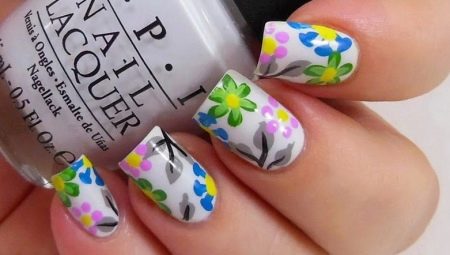Today, the beauty industry has gone so far that you will not surprise anyone with a classic manicure. That is why fashionistas reproduce amazing and unique designs on their nails. At the same time, patterns are applied by various techniques and materials, one of which is multi-colored gel varnishes.
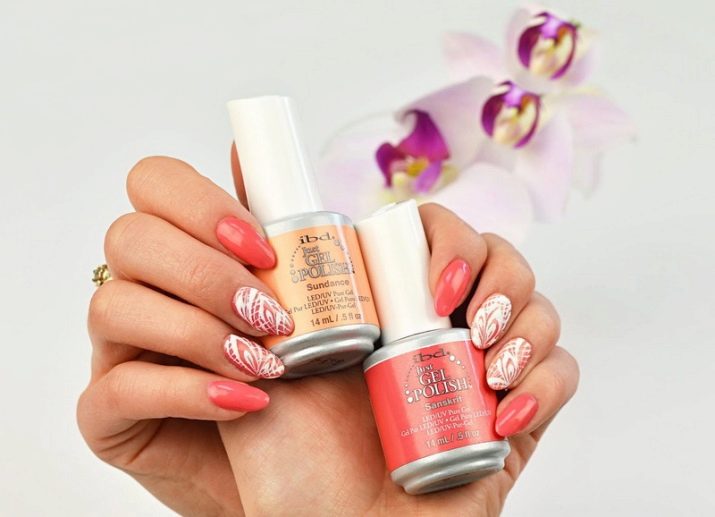
Where to begin?
You can learn to paint with gel polish at home, without resorting to the services of expensive salons.
It is important to stock up with the necessary tools and materials, as well as knowledge, before starting work. To do this, just study the various videos and master classes of the masters.
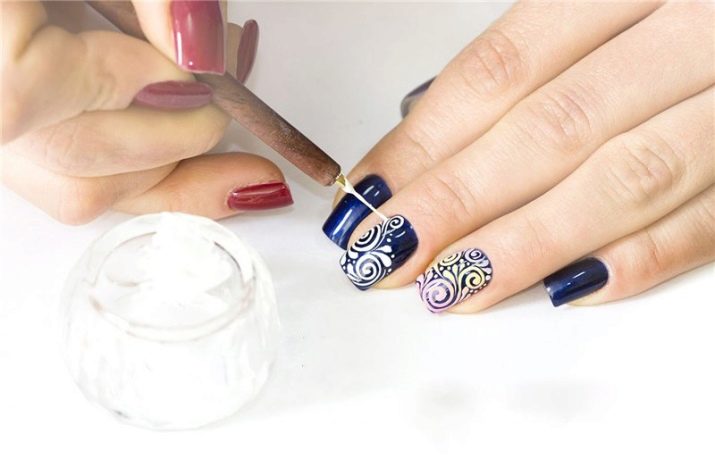
Instruments
The basic set of tools needed for gel manicure, usually consists of the following elements.
- A file with a rough abrasive for rough polishing.
- A buff to give shine and improve the adhesion of gel polish to the nail surface.
- Ordinary sewing needle. You can use a pin, it is more convenient to hold. Needles help to draw subtle patterns, but you need to be careful so as not to scratch the nail.
- Toothpicks. Unlike needles, they will not scratch, but due to the significant thickness of the patterns, the drawings are less clear.
- Manicure wooden sticks. By analogy with toothpicks, they are used for applying any large parts.
- Set of dots with balls of different diameters. They apply dot patterns and curls.
- Set of brushes. Professionals advise choosing models from natural pile.
- A few sponges or pieces of sponge that are designed to create gradients or mix colors of different shades. Also, depending on the structure of the sponge, manicure is given texture.
- Cotton pads and lint-free napkins.
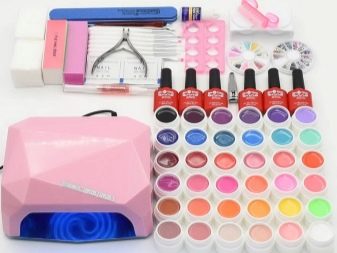

The minimum set of brushes should contain the following types.
- Point. The pile of the instrument is assembled at the tip in a pointed peak. During operation, the brush is held upright and dipped in the varnish only the very tip. Initially, they put an end to it, and then a pattern is drawn from it. The tool will be needed to reproduce small elements, colors and lace.
- "Hair". The professional name is the liner. The brush has a cylindrical shape. It is very thin, the length reaches two centimeters. As a rule, 2 liners are needed: long - for drawing lines, short - for curls. Unlike the dotted one, the pile of this brush should be lowered into the varnish completely. The tool is indispensable for geometric patterns, floral ornaments and monograms.
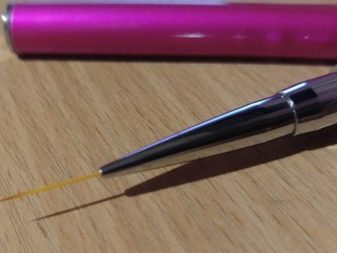
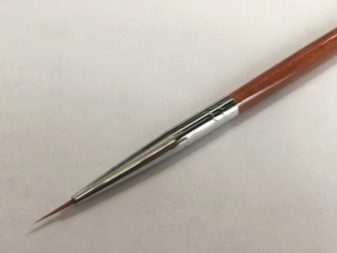
- Plain flat. The brush has a rectangular shape and is designed for gradient transitions, applying sparkles, acrylic powder, rubbing and other decorative elements. With certain skills, she draws various gzhel patterns or medium-sized floral ornaments.
- Dagger-like. The shape is similar to a flat brush, but its tip is cut at an angle of 45 degrees. It is convenient for applying small or thin patterns. A beveled brush is used to write hieroglyphs and other elements of oriental painting. Volumetric figures are also included in the zone of its capabilities. It is convenient for her to bring out "smiles" for French and moon manicure.
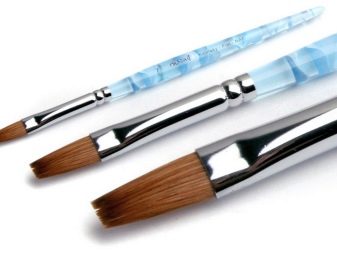

- "Petal". The shape is flat, cut off to the middle on both sides, forming a thin tip. It can easily replace the point and dagger-like, because with proper skill it copes well with tiny details, painting, sparkles and rubbing. For French manicure, the petal is also indispensable.
- Fan. A very wide and flat fan-shaped brush is needed to even out color transitions, design abstract or landscape images, and evenly distribute decor in the form of sparkles or powder.
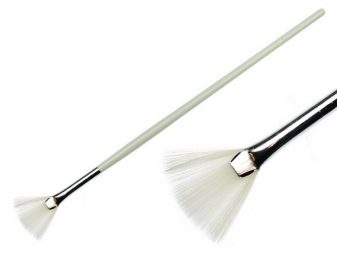
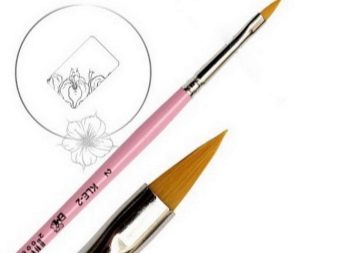
In addition to natural brushes, manufacturers offer their silicone prototypes called shippers. For beginners, they are a more suitable option, since gel polish does not spread on them, it is easier to wash them, hairs do not tangle over time. In addition, shippers are cheaper than natural tools, so when training them they are not so sorry.
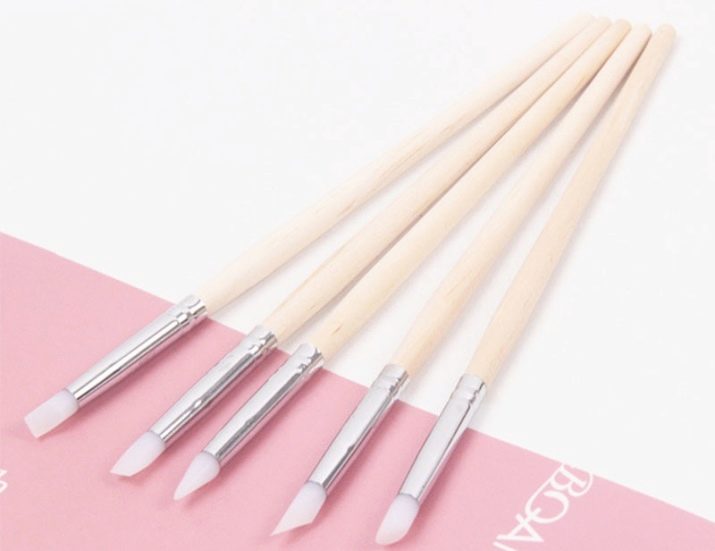
Coating Materials
The list of materials can be no less wide, but we list the main ones.
- Degreaser. At home, you can use nail polish remover or alcohol.
- Base. This transparent coating is necessary to strengthen and align the nail plate. Also, the latest innovations contain various vitamin complexes.
- Gel polishes of different colors.
- Finish top. A transparent tool fixes the result, making it finished.
- Decorative details: sequins, rhinestones, foil, beads, acrylic powder.
- Stencils greatly facilitate the work when creating a manicure. As a template, not only special purchased, but also made and improvised tools are suitable. For example, for geometric patterns, you can use a narrow masking tape, and for openwork drawing - a piece of lace or tulle.
- Adhesive for fixing decor.

How can I draw?
Many novice masters wonder what can be painted on nails coated with gel polish.
It turns out that there are many options for this.
Patterns can be applied:
- regular varnish;
- acrylic paints;
- watercolor;
- acrylic powder sand;
- shallak;
- gel polish.

The most common remedy is varnish. It is affordable, diverse, easy to use. To create a simple design, you need only two shades - for the background and for the pattern. The downside is the dense texture of gel polish, which causes difficulties for beginners in reproducing thin and small patterns. But actually this is a matter of technology, it needs to be developed.
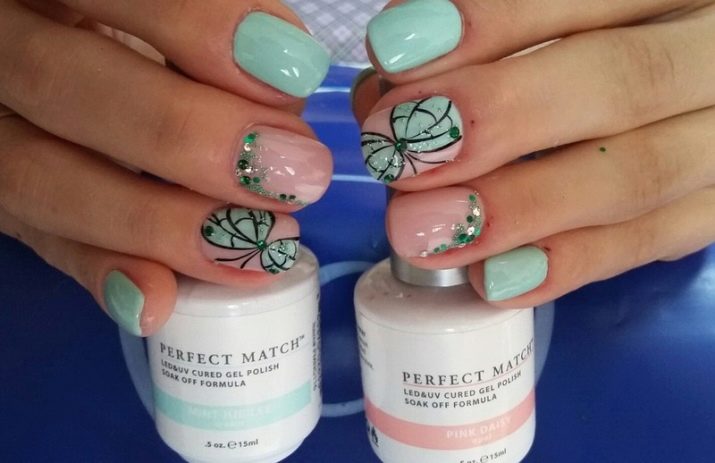
Another recognized material for manicure are acrylic paints. They are easy to use, they lie on the surface better, have a wide color palette, do not crack, do not spread, dry quickly. It is very easy to work with them, they do not need to be diluted with water. The only drawback is that they are quickly washed off, so they must be covered with an fixing layer of the top.
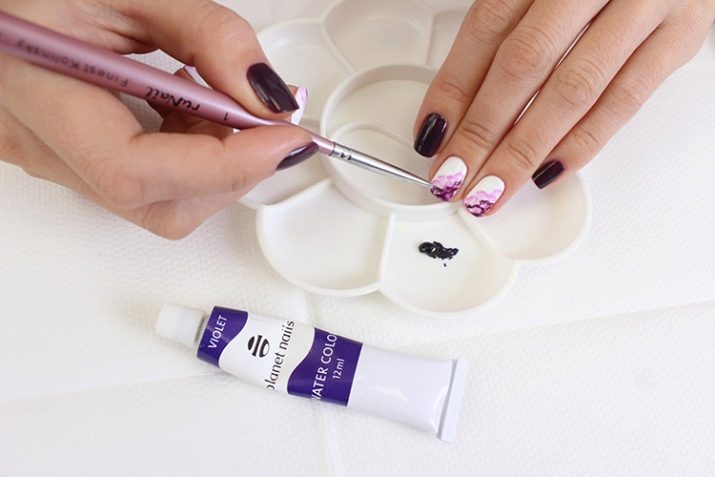
Unlike acrylic, watercolor requires the addition of water, so it dries more slowly. Watercolor paints allow you to create landscape compositions, but working with them is difficult. Technology needs to be worked out for a long time.
Popular drawings step by step
The demand for a certain type of drawings depends on the time of year. It is no secret that snowflakes are popular in winter, blossoming leaves of trees and buds - in the spring, flowers and berries - in the summer, autumn leaves - in the fall.
Consider the algorithms for creating the simplest drawings.
Flower
The easiest way is to use dots. In this case, first a gel polish is collected on the ball and the middle of the flower is placed on the desired spot on the nail. After dots of a larger diameter, round petals are marked around it.
Petals can be drawn with a brush, beveled or “petal” will do. To do this, you first need to put a drop, and then draw a petal shape out of it with a thin tip. Or immediately start drawing, starting from the middle of the flower. The tip of the brush is pressed to the beginning and, without tearing off, make a wavy movement in the form of a semicircle, then the same thing is repeated on the other side. The result is an oblong petal narrowed in the middle.
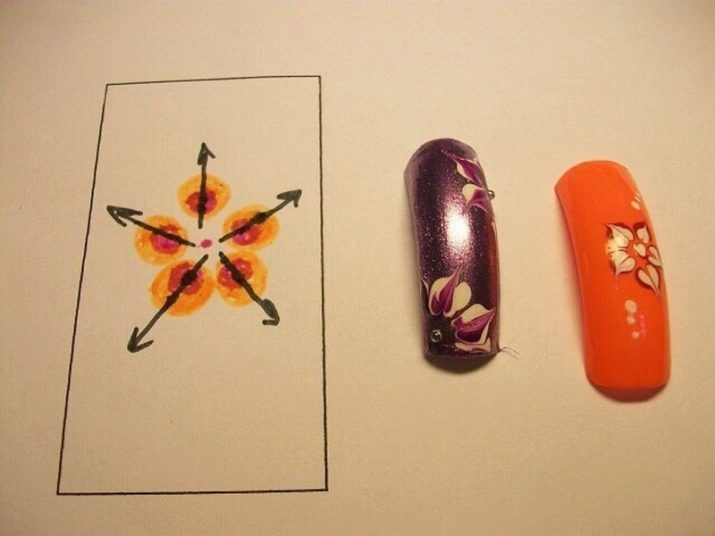
Floral ornament is one of the most complex drawings in nail art. Therefore, you should train, you can even on a piece of paper. The better you own the tool, the more accurate the images will be.
To reproduce a high-quality rose is not obtained by all masters. But the simplest sketch can be done even with your own hands. To do this, you need a dot brush or a short liner. We start to draw a rose from the center. Dip the very tip of the brush into the varnish and, holding it vertically, put a point, and draw a comma from it. The next arcuate line is twisted in the other direction. And so in a circle several times, increasing the length of the arcs. That's all.
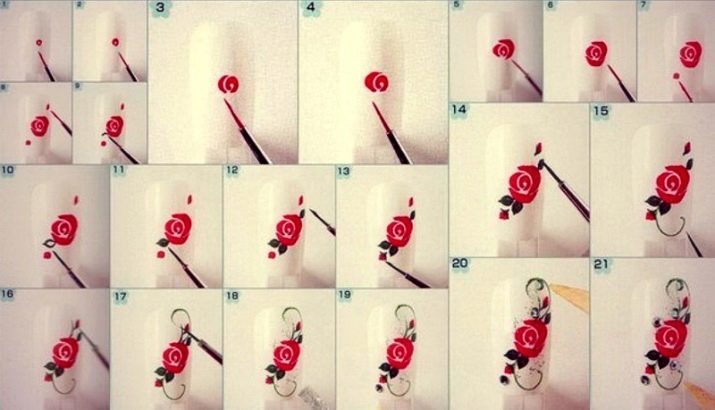
Flowers are sometimes painted not on a dried basis, but on a “wet” layer. In this case, the background does not dry out, it immediately begins to work in a different shade. Drops are applied at the locations of the petals and are gradually stretched with a needle, toothpick or thin brush. It turns out a kind of watercolor effect, because the gel polish spreads.

In the middle of the flowers, it is customary to glue rhinestones or beads, which will enhance the decorative design.
Maple Leaf
Autumn designs are often associated with vibrant leaves. Very often maple variations are reproduced. There are many techniques for obtaining them, but we will consider the simplest one.
Before starting work, it is advisable to remember how he really looks. Experienced artists suggest that it is better to start with the centerlines, and there are five of them on the maple leaf, like fingers on a hand. With a needle, we draw five points, which will be the vertices, of which we draw the axes: one central, passing into a leaf stalk, two to the right and two to the left of it. We design the vertices in the form of arrows - these will be pointed edges. Then you can work either with a medium-length liner or with a thin brush, making out the edge of the sheet with wavy lines.
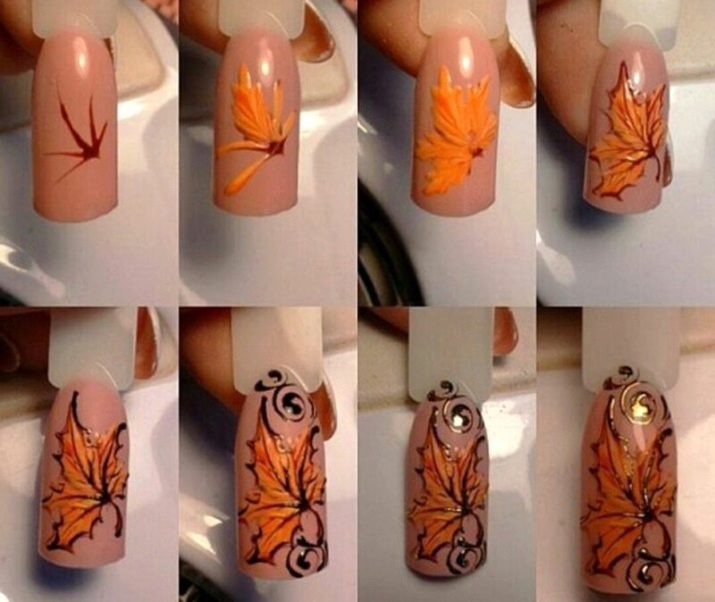
After receiving the contour, further actions depend on the desire of the master. The picture can be tinted or only a sketch can be left. Some draw inner veins on a sheet, while others do not.
Heart
The favorite pattern of young girls are hearts. It turns out that it is very simple to execute them, even beginners will cope with it the first time.
To do this, you only need a toothpick or dots, which put two parallel points at the location of the heart. The distance between them is equal to the width of the pattern.
Then from each point with sharp toothpick pull the tails down to the middle and join together. That's all, the heart is ready.

Gel Polish Geometry
Straight, wavy or broken lines, geometric shapes and dots - have always been popular among fashionistas. Recent trends confirm that geometric patterns are still trending, in demand, and most importantly - easy to reproduce.
To get even strips, just use regular masking tape, forming them stencils for drawing. More complex patterns are offered by manufacturers of manicure materials.
One of the elementary methods involves the use of narrow manicure tape with a sticky wrong side. Strips stick on the base manicure in random order. Topcoat gel varnish of the selected shade. After drying the coating and removing the adhesive tape, we get a monochrome pattern with stripes of the base color. If you need a pattern of contrasting tones, then before scotch tape you should cover the nails with colored varnish.

Another way. Adhesive tape is applied to the base according to the desired pattern. The resulting areas are painted over with gel polishes of various shades. After drying, removing the stencil and fixing with a top, we get a certain geometric mosaic.
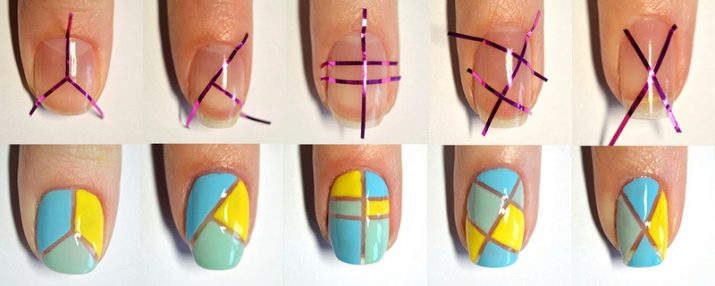
Summer manicure
Another category of popular patterns are summer models. These include palm trees, fruits, berries. In summer, you can often find a manicure with a sketch of a watermelon or strawberry, a ladybug or a sunflower. Some prints are easy to implement, others should be trained to create.
There is nothing complicated in drawing a palm tree. Any thin brush is required. The drawing begins with drawing the trunk from the hole in the nail plate. The line should turn out with a thickening from below, thinner from above and with an inclination. Then a drop of varnish is applied to the top and palm leaves are pulled from it in different directions. Usually from 4 to 5 pieces. The serrated edge is best drawn with a needle or with skills with the tip of a brush.
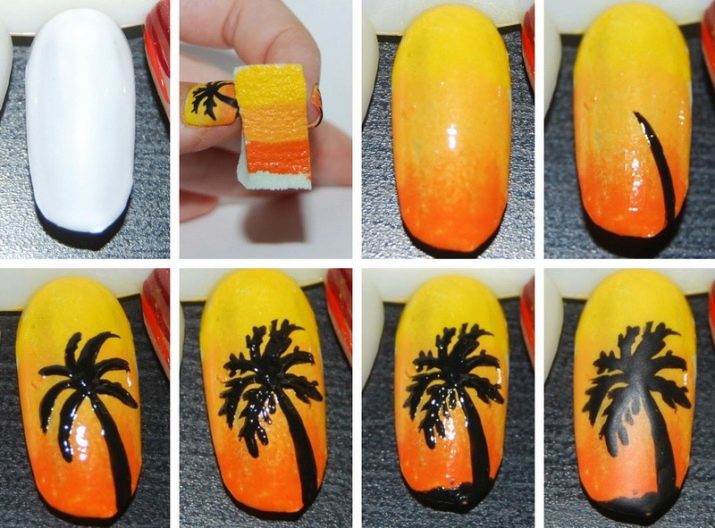
Classic
Using brushes with gel polish, classic types of manicure are well formed: French and lunar. It is important at the same time to use manicure tools correctly.
The holes can be drawn with a dagger-like brush, and the edges of the French manicure are either hers or the usual flat one. To do this, the tool is applied first on one side and the line is drawn to the center, and then on the other hand, also to the center.

Workshops and lessons
For beginners, in order to learn how to reproduce drawings with gel polish, you should improve your technique. It is not necessary to do this on false nails, spend money on them, it is enough to draw with a brush on paper. Drawing should be even and clear.
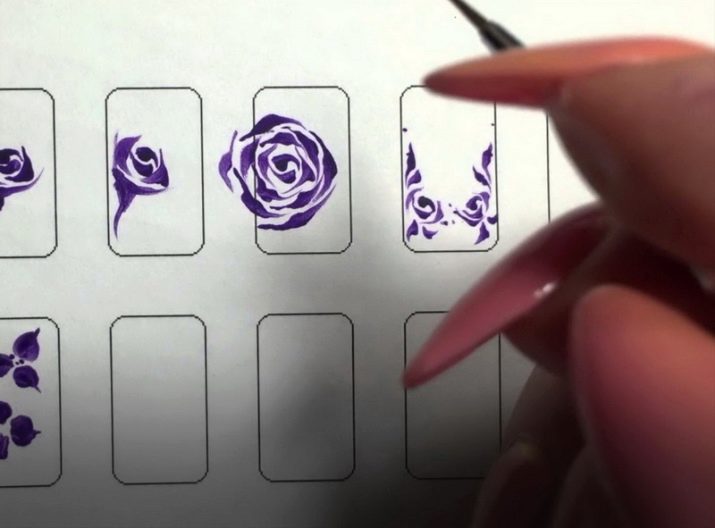
You should not start with complex patterns, it is recommended to start with simple ones, such as points, commas, arcs, geometric shapes, and then gradually complicate the patterns.
Consider several workshops in which some simple ideas are laid out in stages.
In recent days, stamping technology has become very fashionable, which simplifies the application of drawings on the nail. The name comes from English stamping - stamping. In other words, silicone stamps with engraved sketches are used to reproduce the pattern. Consider one of the workshops on this method.
- First, prepare all the tools and materials. It is better to choose a varnish that has a dense texture.
- Then, for 25 minutes, put your hands in warm water with sea salt to steam the cuticle and its easy removal.
- Then, each nail is treated separately: old rough skin, cuticle, burrs are removed. They give the nails a well-groomed appearance.
- Then, using manicure scissors, cut the nails to the desired length and polish the cut with a nail file, giving the desired shape.
- After that, the nail plates are thoroughly degreased with a special tool.
- You can then polish them with a buff to ensure good adhesion to gel polish and shine.
- Then you can start applying the base. The entire surface of the nail should be completely covered with it. If you can’t distribute the product near the side rollers with your native brush, it is better to take another, thinner one. After application, the hand should be turned upside down for a few seconds, so that the product evenly glass to the middle, and then dry under a UV lamp.
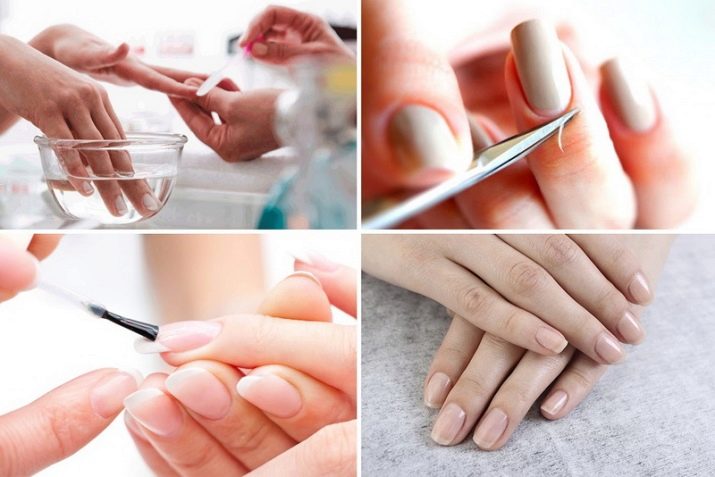
- The next step is color gel polish. The method is similar to working with a base coat. The only difference is the number of layers. As a rule, 3-4 repetitions are enough for saturation, not forgetting to dry in a lamp after each.
- After drying, the sticky dispersion layer should be removed from the last layer, for which they use either a specialized product - clinser, or medical alcohol, or a medical antiseptic.
- Then proceed directly to the design. On a metal plate with a pattern, you need to drop a couple of drops of gel polish and distribute it with a plastic scraper so that all the grooves and grooves are filled, it is better to remove excess varnish. With a rubber stamp, gently push on the plate, the sketch should be printed on it without smearing.
- After the drawing is transferred to the nail: the cliche is applied to the nail surface and rolled from left to right. No unnecessary movements are allowed, otherwise the pattern will be broken.
- All nails are treated in a similar way. After each stamp must be cleaned.
- If fingerprints remain on the finger near the nail, then they should be removed with a cotton swab dipped in nail polish remover.
- Finally, the manicure is fixed with a transparent top and dried.
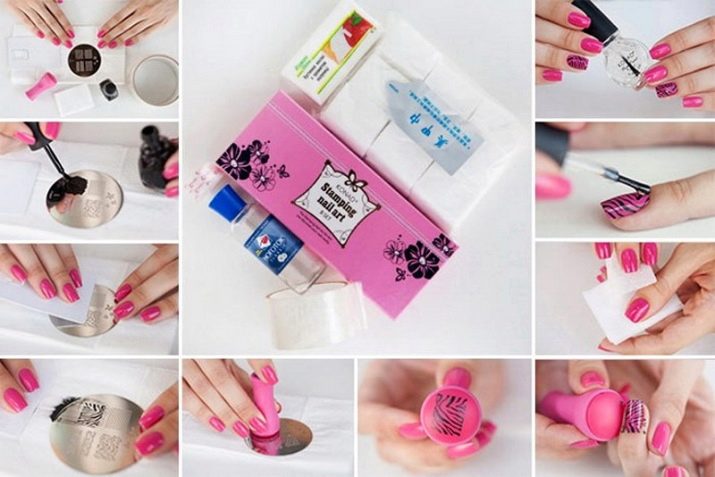
Workshop on summer design.
- Standard processing of nails, the creation of a basic manicure. The procedure involves cleaning, shaping and applying a basic coating.
- Creating a service jacket. French manicure in warm pastel colors: a beige base and a slightly pink smile on the tip of the nail. First, the background gel polish is applied, dried and processed by the clinser. Next, a smile is drawn with a brush, processed according to the same scheme.
- Then proceed to create a camomile pattern. With the help of dots or ordinary toothpicks, yellow drops are applied at the locations of the daisies: one on the little finger and index finger, two on the middle and ring fingers. Typically, the pattern is arranged symmetrically. Therefore, on two fingers on the hand, daisies will be to the left of the center, on the other two to the right.
- Until the yellow color has dried, add a little brown tone on one side for saturation.
- With a point or beveled brush, white varnish is used to paint the petals, starting from the outside to the middle. On those nails with two flowers, one of them is better to make a little smaller.
- The pattern is dried under the lamp and covered with a top top.
- If desired, rhinestones can be glued in the middle of daisies to enhance decorativeness.
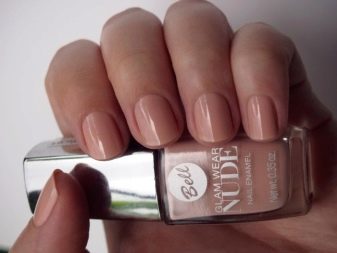

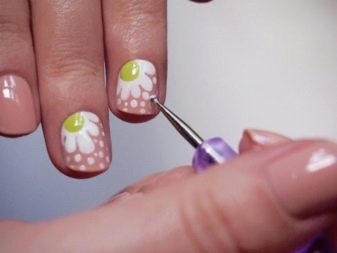

Beautiful examples for inspiration
Design with drawings is always unusual and unique. It can be selected according to the mood, the time of year or a certain style.
For example, lace and mesh have always been at the peak of popularity. Openwork adds to the image of tenderness and femininity.

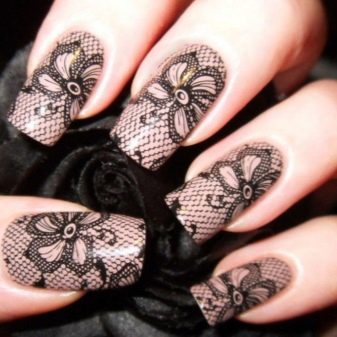
Monograms are spectacular and fit any style. They always attract attention, and those made with gold will add chic.
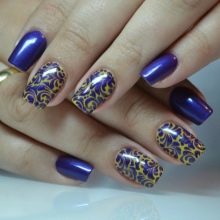

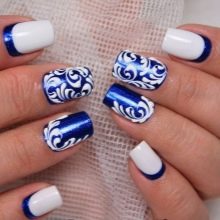
Chinese painting is amazing. This painstaking work can only be done by real masters, but a similar design is worth it.
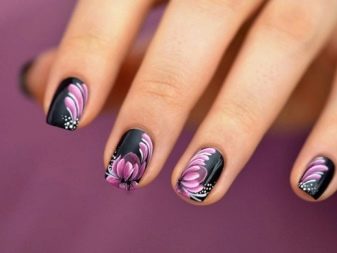
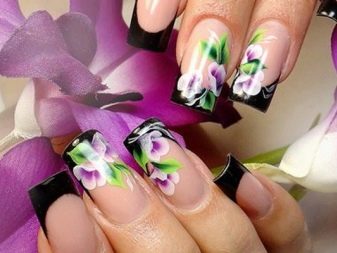
Summer patterns are optimistic, bright. With their warm colors they cheer up.
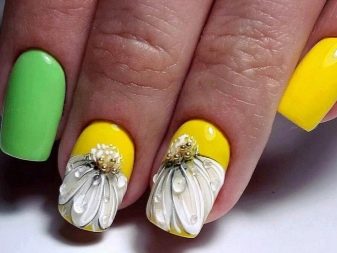
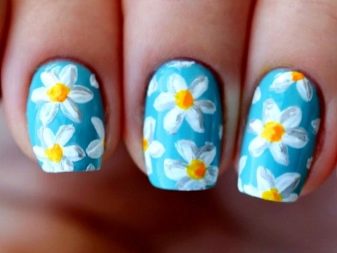
Autumn landscape drawings are no less beautiful, they amaze with the brightness of colors. No spleen is scary.
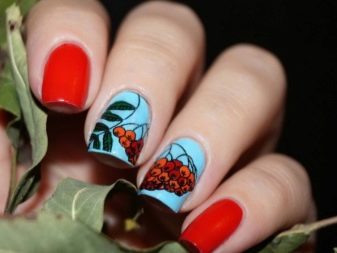
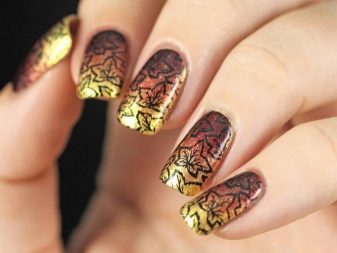
Winter manicure is surprisingly snowy, shimmering and muffled soft, or warm, “knitted” and cozy.
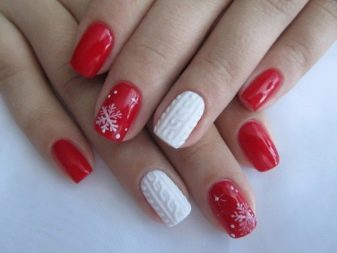
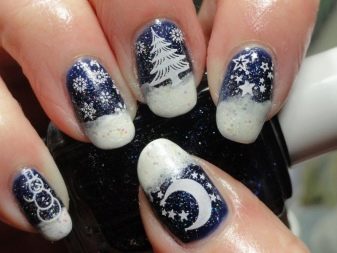
See how to draw flowers with gel polish in the next video.
